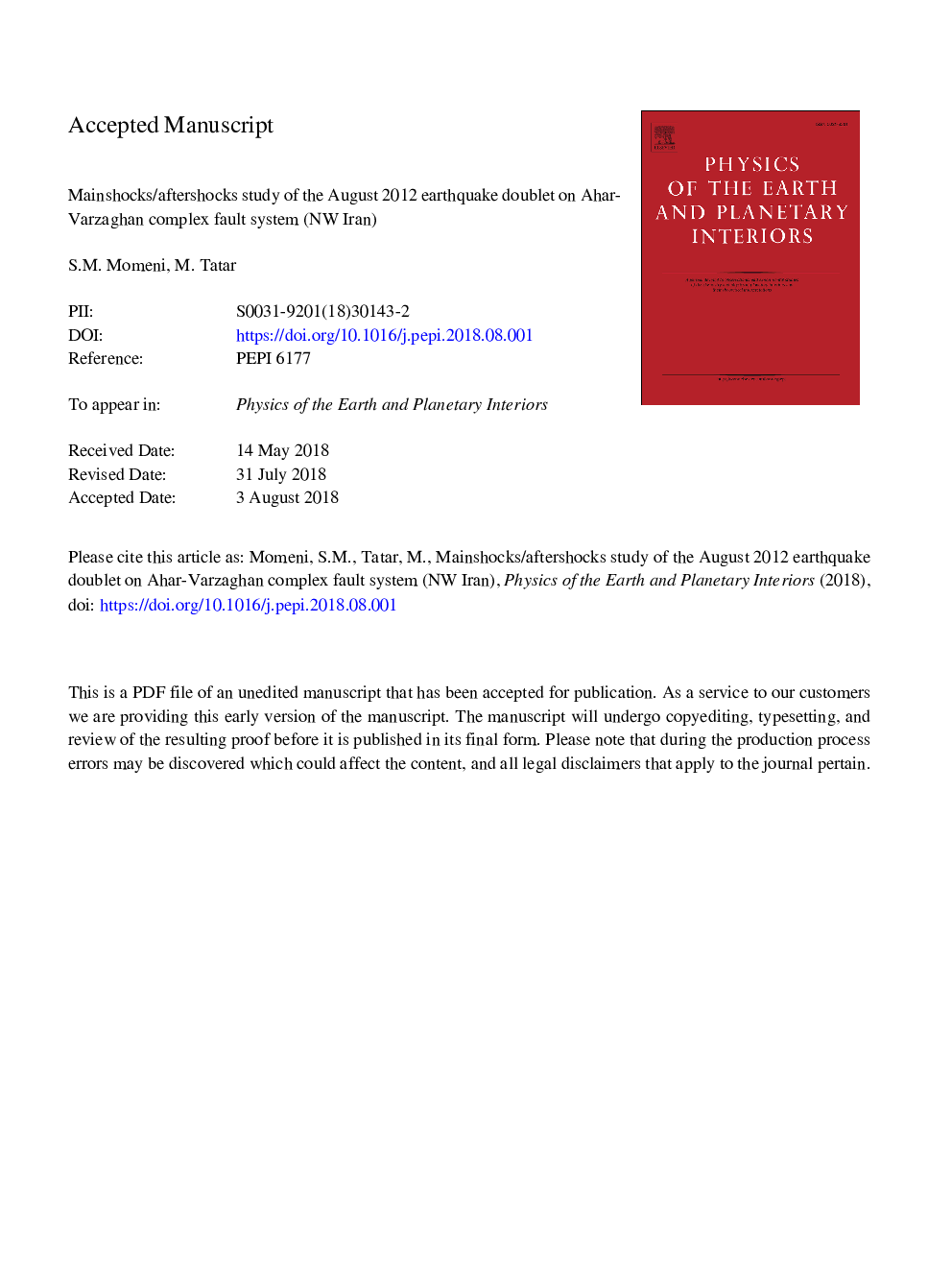| کد مقاله | کد نشریه | سال انتشار | مقاله انگلیسی | نسخه تمام متن |
|---|---|---|---|---|
| 8915654 | 1641457 | 2018 | 52 صفحه PDF | دانلود رایگان |
عنوان انگلیسی مقاله ISI
Mainshocks/aftershocks study of the August 2012 earthquake doublet on Ahar-Varzaghan complex fault system (NW Iran)
ترجمه فارسی عنوان
بررسی تأثیرات اصلی / بعد از وقوع زلزله آگوست 2012 در سیستم گسل مجتمع مجتمع آهار-ورقاقان (شمال غرب ایران)
دانلود مقاله + سفارش ترجمه
دانلود مقاله ISI انگلیسی
رایگان برای ایرانیان
موضوعات مرتبط
مهندسی و علوم پایه
علوم زمین و سیارات
فیزیک زمین (ژئو فیزیک)
چکیده انگلیسی
Precisely located aftershocks are mostly distributed in three distinct clusters. These E-W trending clusters are situated to the north of the surface rupture over a â¼30â¯km long and 10â¯km wide zone, extending from the ground surface down to the depth of â¼15â¯km. Based on our results, the first mainshock (M1) with Mwâ¯=â¯6.5 nucleated 3â¯km east of the surface rupture at a depth of 10â¯km. The rupture evolved toward the west and shallower depths on an almost E-W striking right-lateral strike-slip vertical fault plane and produced â¼12â¯km surface rupture. Its main energy was released at about 5â¯km west of the hypocenter at an average depth of 5â¯km. About 11â¯min later, the second mainshock (M2) with Mwâ¯=â¯6.3 nucleated 5â¯km northwest of the M1 hypocenter and at a depth of 15â¯km. It occurred on an ENE-WSW striking, north-dipping (65° to 70°) fault plane with a dominant reverse mechanism and strike-slip component. The M2 related rupture also expanded to the west and to shallower depths and released most of its energy â¼5â¯km west of the respective hypocenter at an average depth of 11â¯km. The eastern aftershocks mainly show the right-lateral strike-slip mechanism on almost E-W trending fault, close to the location of the first main centroid (M1). The northern aftershocks mostly include reverse mechanisms with strike-slip component near the M2 centroid. A big gap of aftershock activity is observed close to the M1 centroid location, most likely associated with the area of maximum slip. We do not observe any N-S lineament of aftershocks neither near the M2 hypocenter and nor its centroid, thus making the suggestion of some previous investigators that M2 ruptured an N-S trending fault unlikely.
ناشر
Database: Elsevier - ScienceDirect (ساینس دایرکت)
Journal: Physics of the Earth and Planetary Interiors - Volume 283, October 2018, Pages 67-81
Journal: Physics of the Earth and Planetary Interiors - Volume 283, October 2018, Pages 67-81
نویسندگان
S.M. Momeni, M. Tatar,
